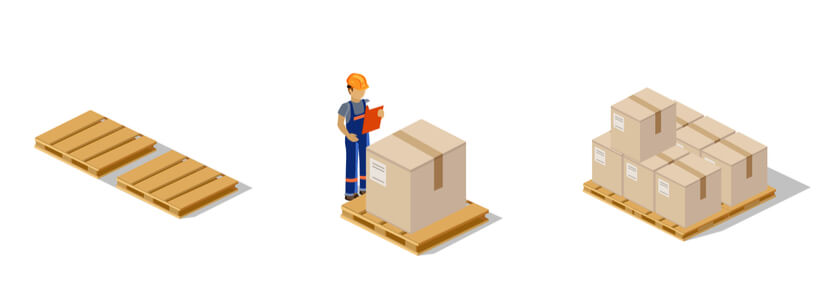
What makes an effective receiving process?
If you’re a distributor, receiving inventory can safely be considered a critical operation for your workplace. Every day, you’re dealing with the challenges of unloading, organizing, putting away, storing, and managing all that inventory. With so many distinct steps within each process, it’s easy to lose a little efficiency.
Nailing down the perfect receiving operations can be a difficult task, but it will ultimately provide a strong foundation for growing your company’s profitability. Strong receiving operations will make it easier to meet your inventory KPIs, reduce the overall cost of your inventory, and streamline the intake process. If you’re running into snags with receiving that seem to be holding you back from profitable growth, it might be time to consider upgrading your inventory management software.
Here are a few pro tips for getting your receiving under control. Following these will lay a solid foundation for improving the efficiency of your warehouse, increasing the bottom line of your operations.
Make organized receiving space a priority.
Because receiving is the first step in the warehouse process, it should be treated as the jumping-off point for managing your inventory.
To keep everything moving smoothly, your receiving space should be organized to handle the biggest shipments possible. This space will be allocated to sorting incoming items, preparing them for storage, and doing a quick quality check. That’s three crucial steps happening in one busy location!
Keeping a clean, organized area will be a huge help in making receiving an efficient task. A space that’s full of empty cardboard boxes and bubble wrap eats away at your effective storage space, and dealing with a messy warehouse forces employees to take the long way around all the misplaced material.
A little housekeeping goes a long way in keeping receiving processes running smoothly, and taking the time to make sure the space is well organized will keep productivity high.
Track what matters.



Designing and implementing an effective system means getting the right metrics. Tracking your inventory in real-time helps catch mistakes before they cost you money — no more miscounts, disappearing stock, or misplaced goods.
Ditching Excel spreadsheets as an inventory management system for something a little more specialized, as well as using barcode scanners, allows employees to closely monitor inventory levels, check for mistakes, and quickly correct them.
While it might not seem pertinent to warehouse employees, sales history is a metric you’ll want to track too. You should know what and how many of each item sells daily, and you’ll want to analyze this data. Do certain items sell faster than others? Is this seasonal? Do some items sell better on a specific day of the week? Understanding sales totals is important to keeping inventory under control, and will help plan for incoming shipments.
Make receiving consistent.
Do you have a standard process for receiving that everyone follows? It may seem like common sense to make sure incoming inventory is processed in a uniform way, but slight variations in how employees check in new shipments could leave you scratching your head at the end of the month.
Make sure all staff that receives stock does so the same way, ensuring that all boxes are received, unpacked, and checked for accuracy.
Consistency helps audit the effectiveness of your operations, too. When all employees responsible for receiving follow the same steps, it’s much easier to identify which steps can be improved further. Continuous improvement is something all businesses should pursue, and it can start with your receiving.
Use inventory management technology.



There’s a difference between managing and tracking inventory, and one is definitely going to be more helpful than the other. If you’re not sure which you should use, check out the quick quiz here. For your receiving to run like a well-oiled machine, having an inventory management solution is a must.
As your business grows, you’ll spend an increasing amount of time managing inventory. Without good inventory management software, you’ll find yourself frustrated with poor inventory visibility, receiving bottlenecks, and limited access to relevant inventory information. Inventory management technology changes all of that, making it much easier to find exactly the information you need, no matter how granular or detailed.
Critique supplier performance.
Unreliable vendors can cause major problems for your receiving. When you’re relying on timely shipments for efficient execution when checking in inventory, an unreliable supplier is a huge source of frustration. Frequent late shipments, wrong items, or incorrect quantities are costing your company time and money.
If this is something you experience regularly from a supplier, you might want to have a conversation with your supplier about the issues and find out what the problem is. If issues persist after a frank conversation, it’s time to find a new vendor.
Establishing and maintaining an efficient warehouse receiving process is an ongoing battle that requires constant vigilance. Once the action plan is in place, it takes a significant amount of elbow grease to roll it out and keep it running smoothly. Persistence is your best friend here, as the temptation to simply set something on the shelf out of sight will always be there.
For a closer look at how SalesPad Desktop handles the receiving process, consider requesting your own personal demo. We’re happy to cover all things receiving related, such as best practices, creating your own receiving process, and using our DataCollection application to improve receiving even further.





